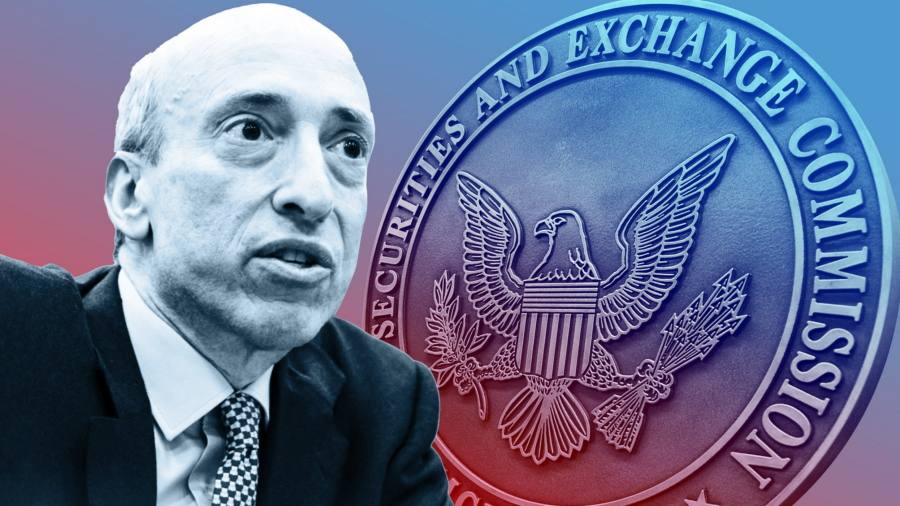Receive free Fund management updates
We’ll send you a myFT Daily Digest email rounding up the latest Fund management news every morning.
US money market funds escaped the threat of “swing pricing” on Wednesday after regulators opted instead to impose mandatory fees and larger liquidity buffers as they sought to improve the $5.4tn market’s ability to withstand extreme stress.
A divided Securities and Exchange Commission adopted new rules aimed at preventing investor stampedes more than three years after the wild market swings of March 2020. Back then, so many investors joined a “dash for cash” and withdrew funds from the $800bn prime money funds, which hold short-term bank and company debt as well as government paper, that the Federal Reserve was forced to intervene.
After strong pushback from the funds industry, the SEC stopped short of imposing swing pricing, which requires funds to adjust the net asset value of withdrawals to reflect the costs of exit so that the remaining investors do not bear that burden.
Instead, the three Democratic commissioners approved final rules that require prime and tax-exempt money market funds for institutional customers to impose a mandatory fee on redeeming investors when a fund’s daily outflows exceed 5 per cent of net assets.
Other non-government money market funds, such as tax-exempt funds that buy state and local government debt, would be required to apply a similar fee if the fund’s board decided it was in its best interests.
Fund managers will also lose the power to halt or “gate” withdrawals when liquidity falls sharply. That practice was introduced after the 2008 financial crisis, but in 2020, it increased outflows as investors rushed to escape before any halt was imposed.
SEC chair Gary Gensler said the rules “will provide a more substantial buffer in the event of rapid redemptions”.
Gensler said the watchdog had shifted to fees in response to feedback on its initial proposals, first released in 2021. “I believe that liquidity fees, compared with swing pricing, offer many of the same benefits and fewer of the operational burdens.”
Fund industry executives were however still disappointed by the outcome. “The SEC has missed the mark by forcing money market funds to adopt an expensive and complex mandatory fee on investors,” said Eric Pan, chief executive of the Investment Company Institute, a leading industry group.
He added that the industry had no experience with imposing liquidity fees. “Money market fund resiliency is an important issue that deserves full consideration. However, [Wednesday’s] decision does not seem to be a logical outworking from the proposal.”
The two Republican appointees, Hester Peirce and Mark Uyeda, voted against the proposal and each asked during the open meeting if the SEC staff was seeking to kill the prime money market fund industry.
Uyeda warned that the SEC had not given the industry enough time to provide feedback on the fee proposal. He pointed to the commission’s experience with liquidity gates, which were adopted in 201 4, over industry objections, and are now being dropped as part of the new rules.
“This mandatory liquidity fee replaces the proposed swing pricing requirement but was not described in detail to the public and thus, unlike in 2014, the commission does not have the benefits of extensive public comment,” Uyeda said. “Had today’s reforms been limited to implementing widely agreed-upon fixes to known problems, I could have supported the recommendations.”
Financial reform group Better Markets meanwhile blasted the SEC for not going far enough. Its legal director Stephen Hall said the regulator should have required funds to hold capital as banks are required to do.
“The reality is that MMFs can pose a major threat to financial stability. They do not have either insurance or an adequate financial cushion to withstand market stresses. As a result, they pose a significant risk to our economy and Main Street,” he said.
.
Read the full article here



